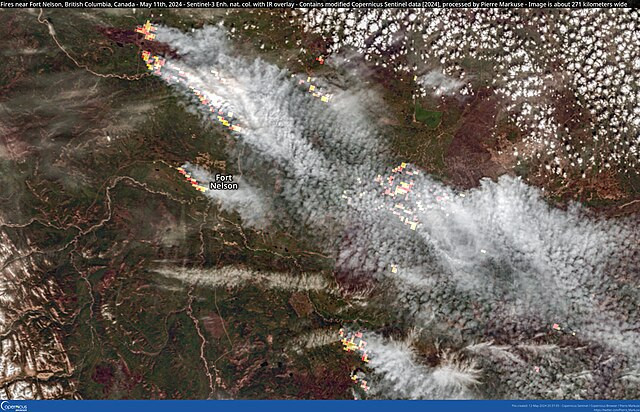Hazy skies and poor air quality have become a persistent issue across parts of the United States, with Minnesota bearing the brunt due to the smoke from over 80 active wildfires burning across Canada. The Minnesota Pollution Control Agency (MPCA) extended an air quality alert for southern Minnesota and the Twin Cities until 11 p.m. Monday. Initially covering the entire state, the alert was lifted for northern Minnesota as conditions improved there.
The air quality in southern Minnesota remains at the red level on the MPCA's scale, signifying unhealthy conditions for everyone. In the Twin Cities, air quality is at the orange level, indicating that it is unhealthy for sensitive groups, including older people, infants, children, and those with respiratory conditions. Residents have been advised to limit outdoor activities.
NEXT Weather Meteorologist Joseph Dames indicated that air quality might see some improvement by Monday afternoon as north winds push the smoke southward. However, he warned that hazy conditions could persist throughout the week. Once the air quality improves, temperatures in the Twin Cities are expected to be pleasant, with highs in the lower 70s.
This marks the first air quality alert of 2024 for Minnesota, but officials warn of a potentially smoky summer ahead. Last year, the state issued 22 air quality alerts due to wildfire smoke. The recent wildfires in northeastern British Columbia began on Friday, rapidly expanding to about 4,200 acres by the following day, prompting evacuations. Alberta has also issued alerts for a wildfire near Fort McMurray.
The impact of Canadian wildfires extends beyond Minnesota. Hazy conditions and air quality alerts have been reported in Montana, North Dakota, and South Dakota. The Canadian Interagency Forest Fire Centre reports 146 active wildfires across the country, with dozens in British Columbia and Alberta classified as "out of control."
The MPCA's alert was prompted by a "band of very heavy smoke from wildfires in northeast British Columbia," which moved over the region. While northern Minnesota's air quality has improved, southern parts of the state continue to suffer as light northerly winds allow smoke to linger.
Air quality indices across the affected states range from "moderate" to "unhealthy" for the general public. The U.S. Environmental Protection Agency's air quality index measures daily pollution levels and their associated health risks, with particular attention to small particulate matter (PM2.5), which can penetrate deep into the lungs, causing inflammation and exacerbating chronic lung diseases.
Exposure to PM2.5 pollution can weaken the immune system and increase risks of asthma, lung cancer, and other respiratory conditions. Vulnerable populations, such as older adults, children, and pregnant individuals, are at heightened risk during poor air quality episodes.
Canada has faced severe wildfire seasons in recent years, with last summer marking the most devastating on record. Over 45 million acres burned, with smoke from Quebec's fires affecting air quality across large swaths of the U.S., from the Midwest to the Eastern Seaboard.
Authorities are preparing for another challenging wildfire season, with drought conditions expected to persist in high-risk regions. The Canadian government noted that these conditions heighten the risk and intensity of both natural and human-caused fires. Climate change is contributing to warmer, drier conditions, which in turn make vegetation more susceptible to ignition and rapid spread, leading to more frequent and intense wildfires.
As Canada braces for an increased fire risk, the United States must also prepare for the secondary impacts of cross-border smoke pollution. The ongoing situation underscores the need for robust emergency response plans and public health advisories to protect communities from the adverse effects of wildfire smoke.






